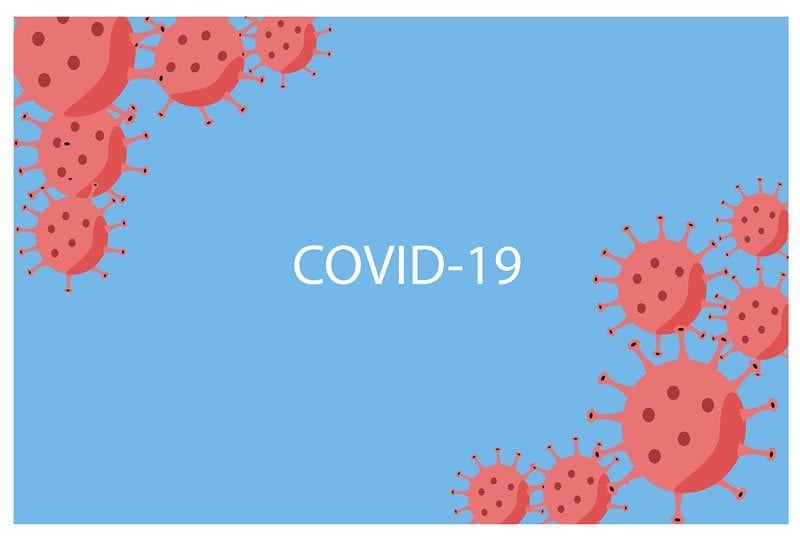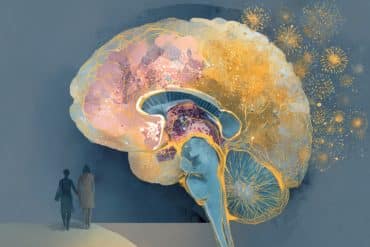Summary: Researchers are working to create a decoy molecule that can trick coronavirus by attracting it before it can attach to lung cells, thus lowering the infection risk of COVID-19. The team aims to deliver the decoy product in an inhaler form to limit the risk of exposure to coronavirus.
Source: Victoria University of Wellington
A decoy molecule that fools coronavirus by attracting it before it can attach to lung cells may provide a way forward in the fight against COVID-19. Te Herenga Waka—Victoria University of Wellington’s Dr. Davide Comoletti, a Senior Lecturer in Biomedical Science in the School of Biological Sciences, is one of a team now studying the practicalities of making a bogus “receptor.”
School of Biological Sciences colleague Professor Graham Le Gros, Director and Group Leader of the University-hosted Malaghan Institute of Medical Research, is also in the Auckland-based research group, led by Auckland Hospital immunologist Associate Professor Rohan Ameratunga.
Dr. Comoletti says the aim is to deliver the decoy product by inhaler so there is no risk to healthcare workers or family.
“The virus is also entering the lungs through droplets of moisture, so the decoy—we hope—would stop the virus from binding to the cells.”
“The idea is to make a purified receptor most spikes of the virus will bind to instead of to the actual receptors attached to sensitive cells.”
“Once the virus is ‘coated’ with the fake receptor, it should be eliminated like any other particle—dust, bacteria, non-pathogenic viruses—through the phlegm.”
The decoys will hopefully reduce the amount of virus that makes it through and attaches to the cells, he says.
“Imagine it this way. If you have a key—the virus’s spike—to enter a locked door—the cell— you first have to find the right lock pad—the receptor. Think of it as a bunch of lock pads flying around that will sequester all the keys the virus has, even before it sees the doors.”
Work on the project began in mid-March. The intention is to have an approved product ready to use on any critically ill Covid-19 patients in a bit more than two months, say Dr. Comoletti.
“While I leave the clinical work and testing to my colleagues, my specific role will be to produce and purify the receptor in large enough amounts that it can be used to help a few patients, at least as a test treatment. If it works, then large-scale, company production will be needed.”
Dr. Comoletti is one of the few academics still working on the University’s Kelburn campus during the lockdown, as it is essential Covid-19-related work. Helping him produce receptors in his lab are postdoctoral researcher Dr. Laura Trobiani and postgraduate student Liam Turk.
He says this is a novel approach towards mitigating the effects of a lethal infection.
“We are hoping this strategy will be successful, because it will reduce the morbidity and the mortality of Covid-19 infections.”
“It will mean some of those with severe cases of the disease will instead only have milder forms of infection. As well as reducing potential mortality rates, it may help free up precious intensive-care unit beds and equipment.”
“In the future, if our research proves to be successful and if drug supplies increase, the purified-receptor agent could be used in milder cases to ease and shorten the duration of infection and halt much community spread.”
“It could also be used on family members or caregivers exposed to the virus to reduce their risk of catching the infection, where the transmission rates are very high.”
“What we hope for the most is shortening the duration of the pandemic and saving many lives through a treatment that has a low-risk of adverse effects.”
The research team is not carrying out this work to make money and the results will be freely available for others to use.
Associate Professor Ameratunga says if a “drug company wants to manufacture our product, we ask that for every dose in the OECD 10 should be used in developing Asian, African and Latin American nations.”
Dr. Comoletti says the researchers are all using their own resources.
“I’ll be applying for funding towards this at some stage, but I’m very lucky to have Laura and Liam, two great researchers, working with me in the lab.”
Dr. Comoletti says they have to stay realistic and keep in mind the possible treatment is still a “long shot.”
“Doing nothing, however, is not an option.”
About this coronavirus research article
Source:
Victoria University of Wellington
Media Contacts:
Press Office – Victoria University of Wellington
Image Source:
The image is in the public domain.
Feel Free To Share This COVID-19 News.








